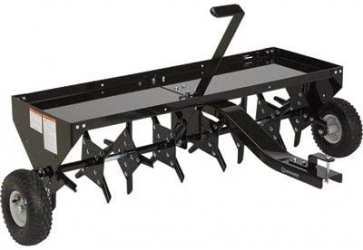@Cobrabit - Bit of a Poa Annua update:
So far I'm not seeing even one sprout of Poa in the roughly 5x4 foot area I worked on last summer/fall. The only reason I'm willing to say that now is there are a couple of small ones fully formed with seed heads right up the border of my driveway that I clearly missed.
This surprises me. I did not expect that much progress at all. Was hoping for 60% reduction maybe. I really have no explanation for why it is this good given that with my over seeding last fall I was not able to put a pre emergent down for Poa. I either got lucky, or Tenacity does more as a pre emergent against Poa than their label indicates?
Just as a refresher, what I did:
Ran a heavy over spray in the area twice, two weeks apart. I was willing to sacrifice good grass to take the Poa down as far as I could. Despite both doses being heavier than label amounts, the good grass came through fine. Went a little lime green for a bit, but I did this sort of summer time and it all bounced back fully going into fall.
I aggressively raked the area to pull up as much of the dead Poa as I could to leave as much exposed soil as possible for over seeding.
I believe it was less than a month later that I over seeded and was pretty aggressive in seeding that area, still it is among the least dense of that part of the front yard, but still not even one Poa in that area.
It's really weird. Even more so because I core aerated before seeding which should have exposed even more dormant Poa seeds.
I'm also not really seeing any in other areas of the yard that I was not aggressive on, but still did a normal pass of Tenacity. I had some in my back yard which is a dog run I don't really do much to, and some near a fence that I had not really spent time on and neither have anything as of yet.
Now we are still in very cold temps, but they should have germinated last fall and be visible even if partially dormant.
Seriously, our avg daily soil temp is showing under 50 still. This is an unseasonably cold start to spring. I haven't done anything to the lawn outside of one early mow and ran the sunjoe over it at level (no sub surface) to pull up moss and winter dead grass. Sending off a soil test today and still won't put tenacity out until the soil temp gets closer to 55.
The lawn is still looking decent without doing anything. That BBU survived its first winter quite well and held the color. Now if we could just get some damned rain a bit of warmup it would have more time to get ready for its first hot summer.

